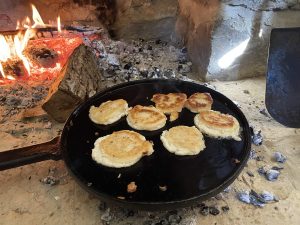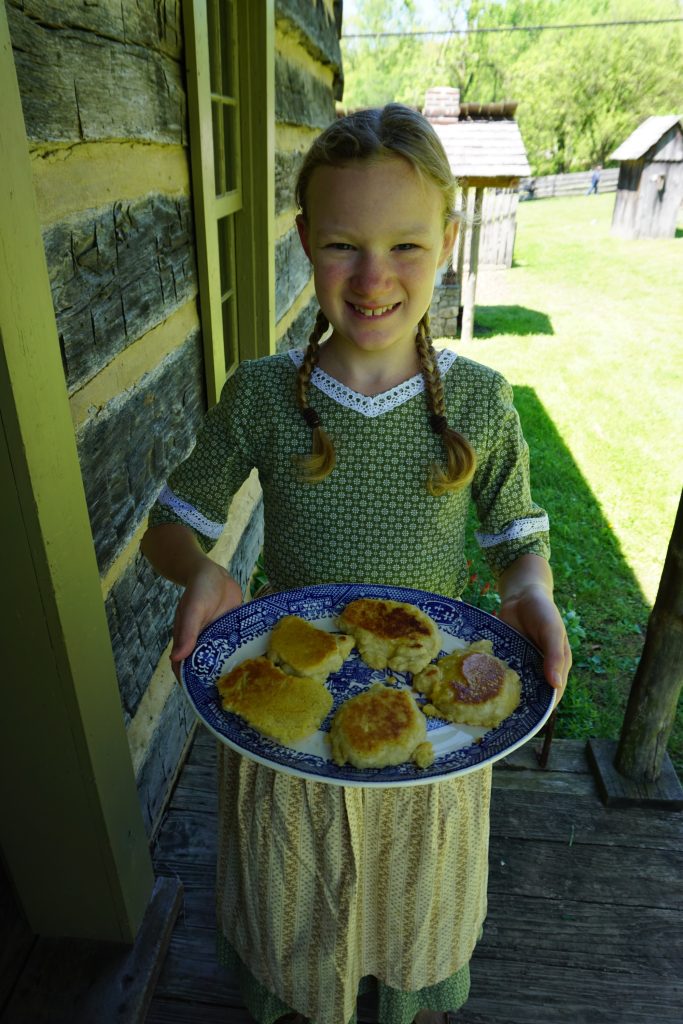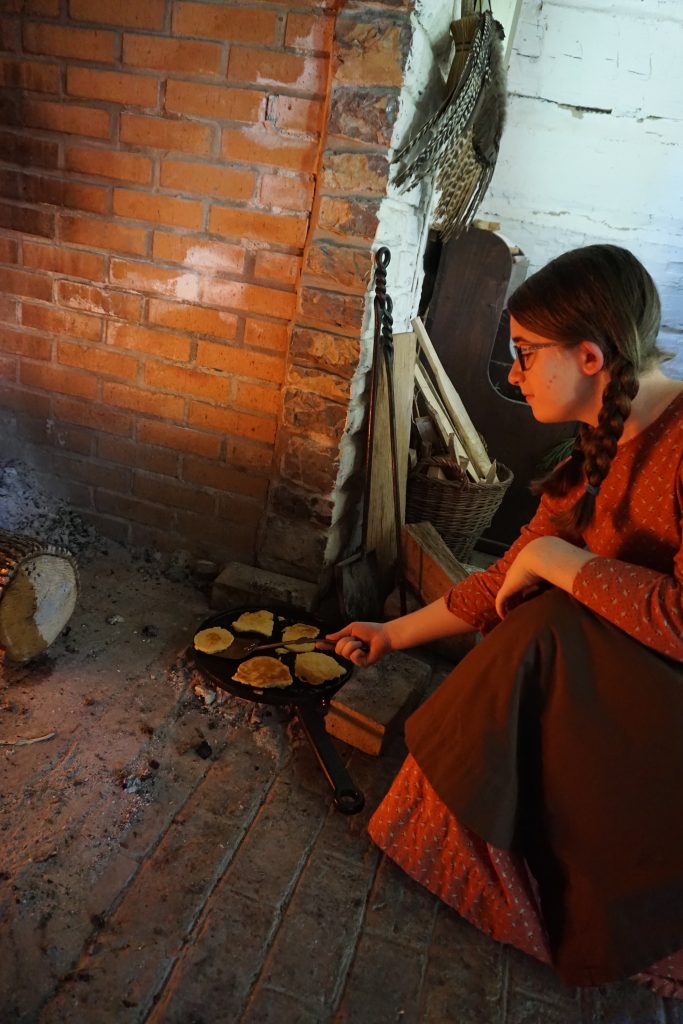
Perhaps no food is more associated with Early America than the hoe cake. These small, flat cakes of cornmeal and water—sometimes enriched with milk, butter, eggs, flour, or leaveners—fed rich and poor, enslaved and elite. The commonly told explanation of how this humble food derived its name is that field hands would cook these cakes on the same tool they used to cut furrows, chop weeds, or hill up soil around plants—a hoe. While certainly a good story, there is scant primary evidence to support it. Rather, it seems that the namesake “hoe” was a cooking tool, not an agricultural implement. One type of “baking” or “bread” hoe was a flat piece of metal, often with a detachable wooden handle, that could be held directly over a fire or placed in an oven—similar in form to a bread peel. Another was simply a round iron plate placed over a bed of coals or hung above a fire—also known as a “griddle.” Yet hoe cakes weren’t just baked on hoes or griddles. They could also be baked in ashes, on hot stones or bricks, on a wooden board propped up by the fire, or in any number of iron cooking implements like spiders and dutch ovens. They were a truly versatile foodstuff.
The primary ingredient in hoe cakes—corn, or maize—is indigenous to the Americas and was first domesticated by Native Americans, who baked cakes of ground maize and water directly in the fire, often sandwiched between two leaves. Appropriately named “ash cakes,” they were the predecessors of hoe cakes. Native Americans introduced maize as well as this method of preparing it to European settlers, who were only familiar with growing wheat, barley, rye, and oats in the Old World. In turn, Europeans brought to the New World iron cooking implements, which they often traded with Native Americans. Thus, maize and metal were a vital part of what would later be called the Columbian Exchange, or the cultural reconnection of the Eastern and Western Hemispheres.
Enslaved Africans also made cornmeal cakes, though many lacked access to hoes or griddles and had to prepare the cakes directly in the fire as the Native Americans had originally done. Susan Kelly, who was born enslaved in Virginia and interviewed at age 100 in the 1930s, remembered her mother making ash cakes in their “little cabin in the yard.”:
Mammy used to bake ashcakes. They was made with meal, with a little salt, mixed with water. Then Mammy would rake up the ashes in the fireplace; then she would make up the meal in round cakes and put them on the hot bricks to bake. When they had cooked around the edges, she would put ashes on the top of them, and when they was nice and brown, she took them off and washed them off with water.
In contrast to bland, unappetizing ash cakes, the hoe cakes eaten by wealthier (mostly white) people were enriched with cream, butter, and leaveners. George Washington enjoyed “mush cakes of Indian meal [cornmeal] swimming in butter and honey” every morning for breakfast. Washington’s hoe cakes were especially light and airy because yeast was added to the batter, which was allowed to rise overnight beside a warm hearth. Today, most of us can easily replicate this “presidential” breakfast, or we might want to pay homage to the Native Americans and enslaved Africans by making ash cakes directly in the fire. Either way, eating hoe cakes is a unique and tasty way to experience history.
Most people in Early America learned to make hoe cakes through the oral tradition—with ingredients and instructions passed down through the generations by word of mouth. When published cookbooks became available in the 19th century, printed receipts (recipes) for this common foodstuff began to appear—as well as all manner of similar flat cakes like Johnny cakes, flapjacks, flannel cakes, batter cakes, mush cakes, etc. Below is a receipt for “Indian Hoe Cakes” from The Kentucky Housewife, written by Lettice Bryan and published in 1839. (The term “Indian” indicates that the receipt contains maize, or what we now just call “corn.” Because European settlers called all grains “corn,” they added the adjective “Indian” to distinguish maize from wheat, barley, rye, and oats. This term is found throughout 19th century cookbooks.)
“Indian Hoe Cakes”
Sift a quart of Indian meal, mix it with a large teaspoonful of salt, two large tea-spoonfuls of butter, and make it a thin dough with sweet milk. Heat your griddle rather brisk, place it over a bed of clear coals, grease it well with lard or butter, put on your dough in small thin cakes, and bake them hastily, turning them over once. As soon as both sides have a thin crust, and are of a light brown, send them to table, that they may be split and buttered while warm.



The mission of Exchange Place Living History Farm is to preserve and interpret the heritage of mid-19th century farm life in Northeast Tennessee. A private, non-profit organization, Exchange Place is maintained and operated primarily by volunteers and is supported by donations, fundraisers, memberships, and grants.

Exchange Place
4812 Orebank Rd,
Kingsport, TN 37664
423-288-6071